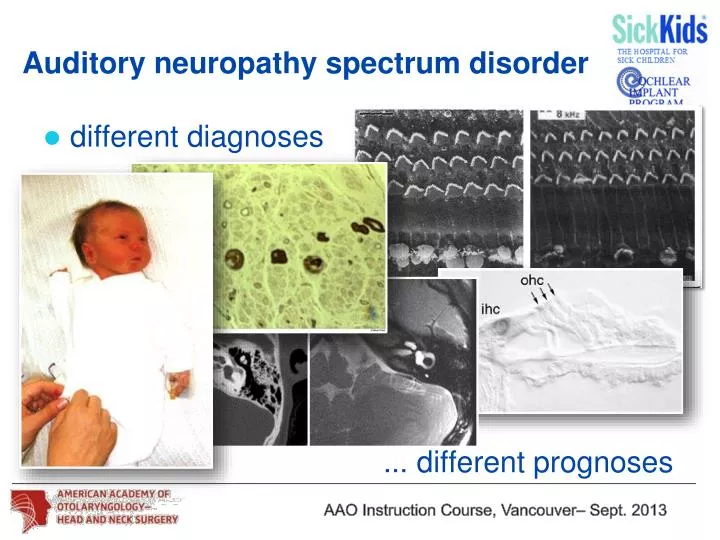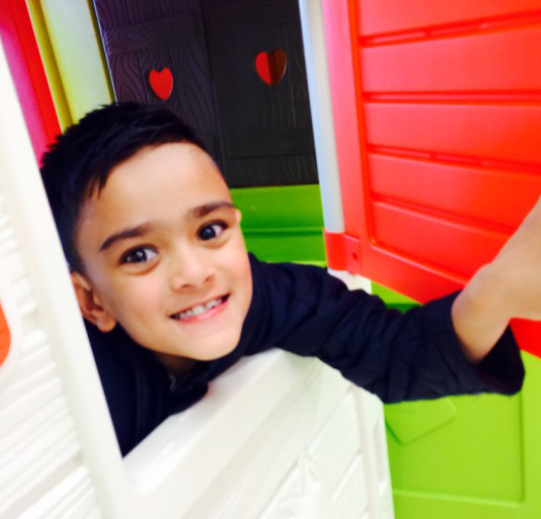

In the study, Walker and colleagues compared outcomes in children with ANSD (n=12) to children with similar degrees of mild to moderately severe sensorineural hearing loss (n=22) in an accelerated longitudinal design study. (2016) in an upcoming issue of the Journal of American Academy of Audiology explore this topic. Many earlier studies were indicating limited benefit showing in children with severe to profound behavioral thresholds, were possibly fit below targets due to the concern of over amplification, and may have received delayed intervention until behavioral thresholds could be obtained. Though the guidelines suggest a hearing aid trial, there are few studies examining the benefit of amplification in children with ANSD.
#Auditory neuropathy spectrum disorder recommendaions trial#
The limitations of objective measures places significant pressure on the acquisition of accurate behavioral measures, which is often complicated by comorbidities that can accompany ANSD (e.g., prematurity).Įven when thresholds can be obtained the question remains to what is the appropriate method of intervention? Do you fit amplification, is a cochlear implant the best option? Currently, the American Academy of Audiology’s Pediatric Amplification Guideline recommends that children with ANSD receive a hearing aid trial if their behavioral thresholds are sufficiently high to impede speech perception at conversational levels.

Despite compromised ABR responses, cortical auditory evoked potentials (CAEP) can often be recorded from ANSD patients, and there is emerging research in the application of CAEP for estimation of behavioral thresholds in this population (He et al. A critical tool for the fitting of amplification in young pediatric patients, the auditory brainstem response (ABR), is compromised in this population for estimation of behavioral thresholds. For children with ANSD in the mild-to-severe HL range, the current results support this recommendation, as children with ANSD can achieve functional outcomes similar to peers with SNHL.Intervention for children with auditory neuropathy spectrum disorder (ANSD) represents a significant challenge in pediatric audiology. The American Academy of Audiology Pediatric Amplification Guidelines recommend that children with ANSD receive an HA trial if their behavioral thresholds are sufficiently high enough to impede speech perception at conversational levels. Although the number of participants was too small to conduct statistical analyses for speech perception testing, there appeared to be a trend in which the ANSD group performed more poorly in background noise with HAs, compared to the SNHL group. Children with ANSD displayed functional speech perception skills in quiet. Paired t-tests indicated no significant differences between the ANSD and SNHL groups on language and articulation measures. Paired-sample t-tests were used to compare children with ANSD to children with SNHL. The groups were matched based on better-ear pure-tone average, better-ear aided speech intelligibility index, gender, maternal education level, and newborn hearing screening result (i.e., pass or refer).Ĭhildren and their families participated in an initial baseline visit, followed by visits twice a year for children 2 yr of age. The sample consisted of 12 children with ANSD and 22 children with SNHL. Three sites were involved in participant recruitment: Boys Town National Research Hospital, the University of North Carolina at Chapel Hill, and the University of Iowa. Speech perception and communication outcomes data were gathered in a prospective accelerated longitudinal design, with entry into the study between six mo and seven yr of age. This study compared the speech production, speech perception, and language outcomes of children with ANSD, who are hard of hearing, to children with similar degrees of mild-to-moderately severe sensorineural hearing loss (SNHL), all of whom were fitted with bilateral hearing aids (HAs) based on the American Academy of Audiology pediatric amplification guidelines. Given the varying presentations of ANSD in children, there is a need for more evidence-based research on appropriate clinical interventions for this population. Up to 15% of children with permanent hearing loss (HL) have auditory neuropathy spectrum disorder (ANSD), which involves normal outer hair cell function and disordered afferent neural activity in the auditory nerve or brainstem.


 0 kommentar(er)
0 kommentar(er)
